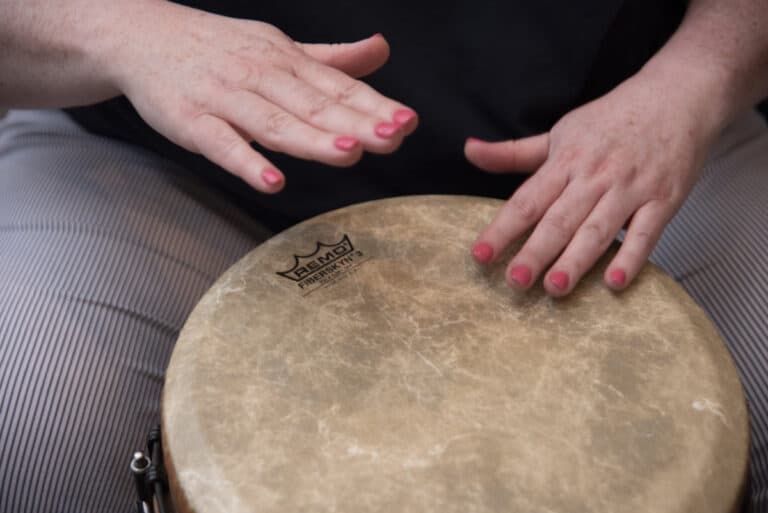There are many different leadership styles that music directors can employ, including those explored in a previous CLEF Life article on leadership styles in music ministry. While the best managers will alter their style given the circumstances of a particular situation, music directors must choose which primary leadership style they will use to lead their music programs. When considering the different leadership options that exist for music directors, there is one that rises above all the others — servant leadership.
A member-first approach to leadership
Servant leaders are just that — servants first. Music directors who commit to servant leadership don’t focus on outcomes, power, or personal gain first — the absolute fundamental value of the servant leader is their focus on the well-being and growth of those they lead. Member-first directors still desire musical excellence, but accomplish their goals by interacting and communicating lovingly, sensitively, and empathetically. They don’t wield the power of their position, but rather only take themselves into consideration after thinking about their singers and instrumentalists. Every action, directive, and decision made is with the member’s goodwill in mind first and foremost.
We don’t often experience servant leadership by our world leaders or within the corporate world, so it may seem a bit foreign to many people. Why, then, is this type of leadership preferred for music ministry?
Benefits of servant leadership in music ministry
If you already employ a member-first type of leadership, then you know how successful this form can be. If not, then think for just a moment about how the people in your music ministry encounter life outside of church. Some are challenged with working jobs they don’t like, which leads to frustration and dissatisfaction. Some deal with health concerns for themselves or loved ones, while others deal with the stress of raising children, caring for aging parents, money concerns, or challenges within relationships.
When members arrive for rehearsal or liturgy, they may be tired or emotionally drained from the challenges of life … but they’re present. No matter the challenges in their lives, they’ve made the commitment because they’re called to share their musical gifts and talents. For many, the time they spend in the music ministry might be the most rewarding time they experience each week.
Now consider the reaction by members when they know their welfare and growth are the primary concerns of their music director. Immediately, beyond any spiritual or musical reason for participating, members experience an even deeper buy-in to the ministry. They are eager to learn and give their all, but there’s more to it — they become far more invested because they know they are being treated well. Whether or not they are consciously aware, they experience a kind of care and compassion that they’ve learned about in their faith.
We are called to live lives of justice, and servant leadership demonstrates a respect and care that is rooted in Gospel living. And while members are sharing their time and talent in ministry, they yearn for a place where their well-being and growth are greatly valued. Servant first and leader second is a wonderful leadership model for this powerful ministry of music!
The challenges of servant leadership
While servant leadership is the best fit for leading music ministry programs, it’s naïve to believe that this style is without its challenges. First and foremost, a music director must be authentically committed when employing a servant leadership model. Directors cannot pretend to make member’s well-being and growth priority one — they must honestly commit. Members can tell when their leaders are faking it. Authentic care and concern are important when using a member-first model of leadership.
Embracing this member-first model is difficult work for directors. As servants first, they must constantly be viewing their actions and communication through the eyes of others, and it’s not always easy. Directors must watch members closely as they react and invest the time and care to learn who each member is. Directors must spend time considering what actions may lead to their member’s musical, spiritual, or emotional growth. The repertoire that directors choose for liturgy may be affected as they more critically evaluate their member’s ability. Above all else, the way directors communicate is of utmost importance, for the words they choose will greatly influence how cared-for members feel.
It’s also a fallacy to believe that a ministry will be conflict-free when utilizing this type of leadership. Anytime groups of people gather, it’s a guarantee that disagreements and misunderstandings will occur. It’s just human nature. When conflict is unchallenged and allowed to fester, it can destroy the success of any leadership effort, including servant leadership. Conflict must be challenged, managed, and ultimately resolved if servant leadership is to be effective.
Servant leadership is a win-win for everyone
A music director that leads from a servant-first and leader-second model ultimately realizes the value their servantship offers their members. Truth be told, this type of leadership is not just rewarding for members but is also equally rewarding for directors. Members become more engaged, respond more passionately to direction, and just seem happier. Everyone wins when directors choose to serve their members from a servant leadership model.
Want to learn more about servant leadership? Check out these resources.
This page from The Center for Servant Leadership website and this article from the SHRM Executive Network website are a great place to start.
For a deeper look at servant leadership, try these two books:
- Servant Leadership: A Journey Into the Nature of Legitimate Power and Greatness, by Robert K. Greenleaf
- Managing Music Ministry Beyond Notes and Chords, by Stephen Petrunak and Randall R. Phillips, GIA Publications
Steve Petrunak is a founding board member of CLEF and recently retired as the director of music at St. Blase Catholic Church in Sterling Heights, Michigan. He has worked in music ministry for more than 40 years and is the co-author of “Managing Music Ministry: Beyond Notes and Chords.”
Copyright © 2025 Catholic Liturgical Ensemble Formation
Looking for more resources? Search our full online library of CLEF Life resources, or sign up for CLEF Life email updates to receive the latest resource in your inbox once a week.



